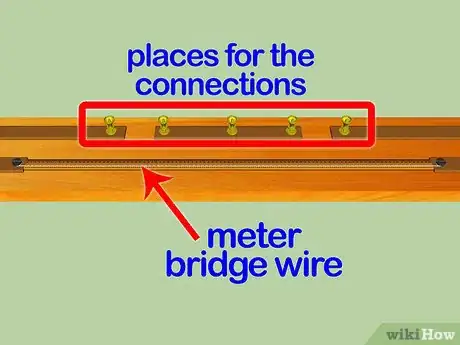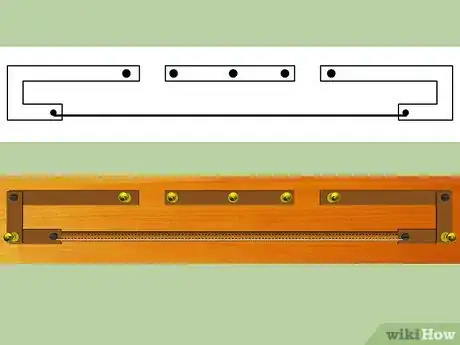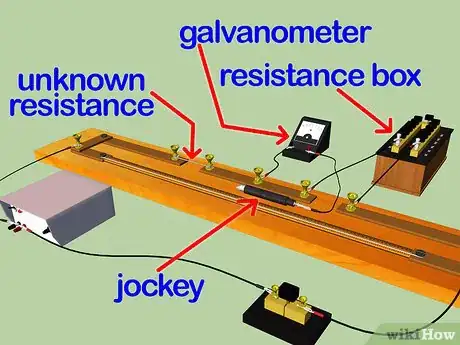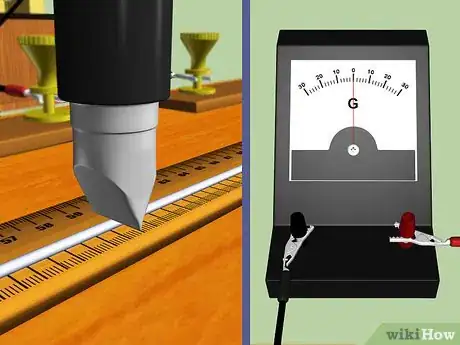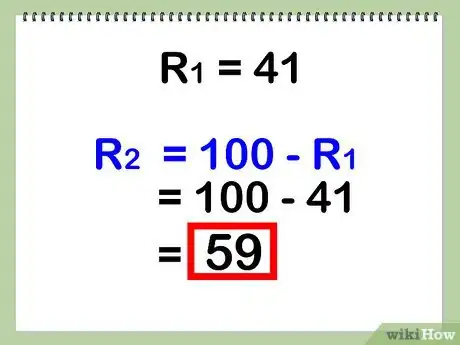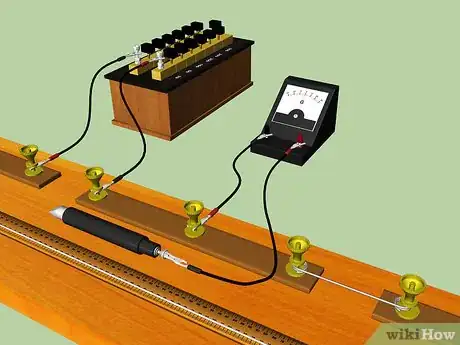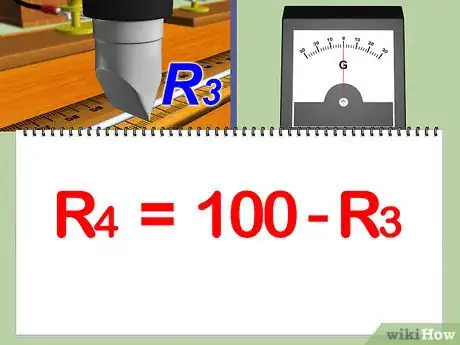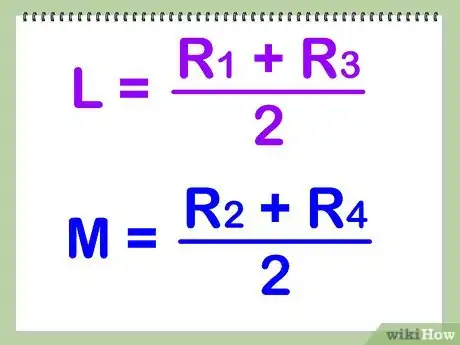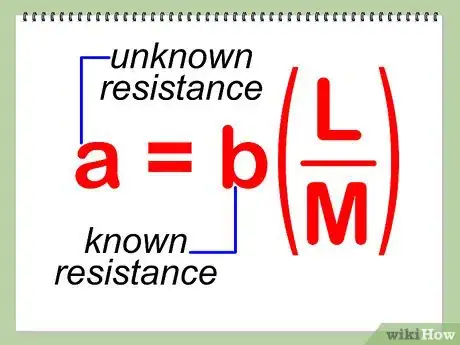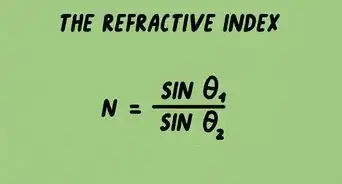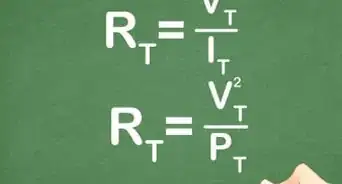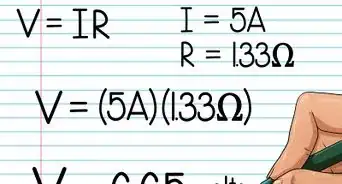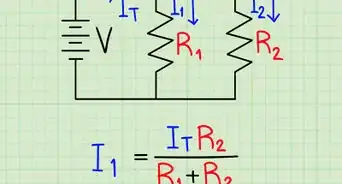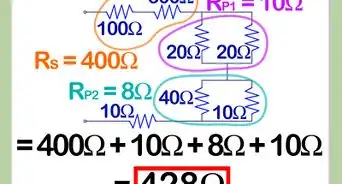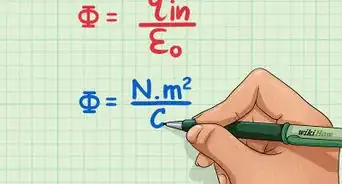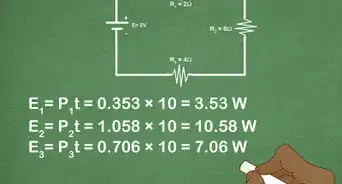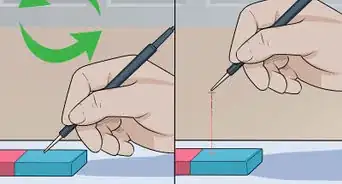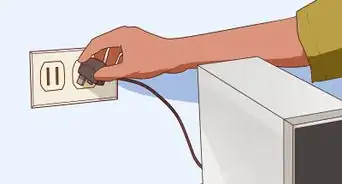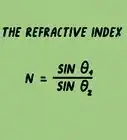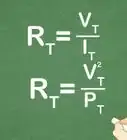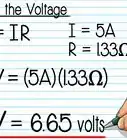X
wikiHow is a “wiki,” similar to Wikipedia, which means that many of our articles are co-written by multiple authors. To create this article, 10 people, some anonymous, worked to edit and improve it over time.
This article has been viewed 163,020 times.
Learn more...
A meter bridge is an apparatus used to find the resistance of a coil; you will find it as part of the tools of a physics lab.
Steps
-
1Check that the meter bridge wire is connected. If not, just connect both ends of the wire tightly. The apparatus has 5 places for the connections. All gaps for connections are found above the meter bridge wire; two on either sides and one in the middle.
-
2Imagine 5 dots plotted on a paper which are coplanar also imagine a line below it which is a little longer than the line which we can get if we join the points. The above connection is similar to this.Advertisement
-
3Connect a known resistance on one side and unknown resistance on the other this fills 4/5 gaps left for connections. In the remaining gap, connect a galvanometer, high resistance and jockey all in series.
-
4Slide the jockey over the meter bridge wire and note down the reading for which you get zero deflection in galvanometer.
-
5Let it be R1 now put R2=100-R1.
-
6Similarly, calculate another reading by interchanging the known and unknown resistances in the above circuit.
-
7Let the new readings be R3 and R4 where R3 is the length obtained for zero deflection and R4=100-R3.
-
8Add R1 and R3 and divide it by two. note it down as L. calculate the average for R2 and R4 too let it be M.
-
9Repeat the above for various known resistance values. Each time you can calculate the unknown resistance using the formula:unknown resistance(a)=known resistance(b)*L/M. The value is found to be the same for all values of known resistance.
Advertisement
Community Q&A
-
QuestionHow can I calculate the resistance of coiled wire?
 Community AnswerCoiled wire is the unknown resistance which is calculated using Wheatstone bridge or Carl Froster bridge.
Community AnswerCoiled wire is the unknown resistance which is calculated using Wheatstone bridge or Carl Froster bridge. -
QuestionWhat causes the errors which make the resistance of unknown variables?
 Community AnswerThe incorrect reading at the meter scale with respect to null deflection of the galvanometer causes variable in the resistance. Also, the supply of current for longer time overheats the galvanometer and its internal resistance varies, which makes the resistance variable.
Community AnswerThe incorrect reading at the meter scale with respect to null deflection of the galvanometer causes variable in the resistance. Also, the supply of current for longer time overheats the galvanometer and its internal resistance varies, which makes the resistance variable. -
QuestionHow do I calculate the unknown resistance of wire, given 1 ohm as a fixed resistance, using a meter bridge?
 Community AnswerBy using a meter bridge circuit. The known standard resistor of 1 ohm will be connected on the left hand gap of the meter bridge, and the unknown resistance will be connected on the right hand gap of the meter bridge. Then, when the balance point is obtained, the unknown resistance can be calculated using the meter bridge formula: l/100-l = 1/R
Community AnswerBy using a meter bridge circuit. The known standard resistor of 1 ohm will be connected on the left hand gap of the meter bridge, and the unknown resistance will be connected on the right hand gap of the meter bridge. Then, when the balance point is obtained, the unknown resistance can be calculated using the meter bridge formula: l/100-l = 1/R
Advertisement
About This Article
Advertisement
